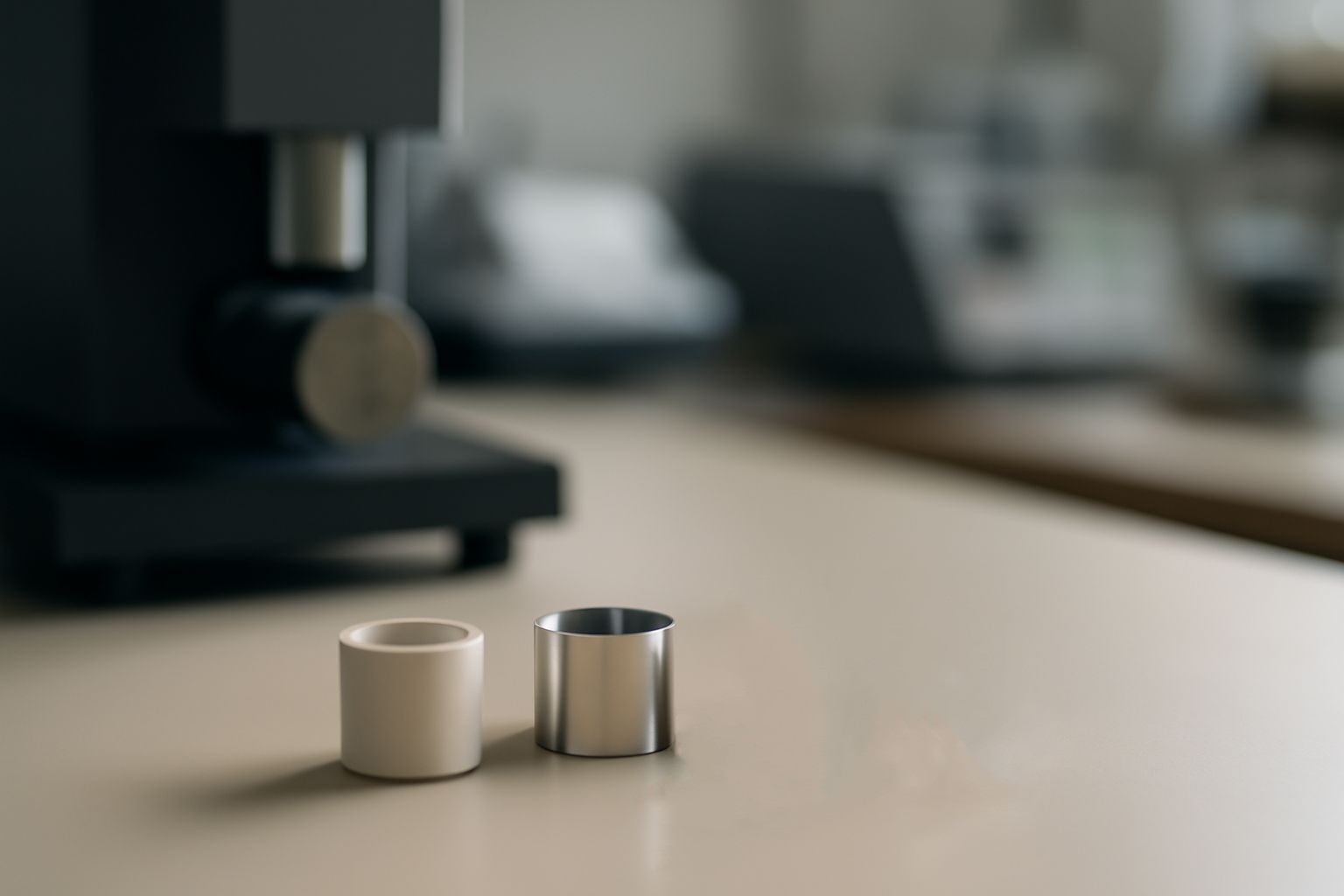Your cart is empty.
shop now
Your cart is empty.
shop now
Many mistakes in thermal analysis come from picking the wrong crucible type. Performance suffers and measurement accuracy drops when labs use unsuitable materials or wrong technical parameters.
For reliable thermal analysis, review the technical specifications of your reusable crucible. Evaluate material, thermal conductivity, temperature resistance, shape, volume, and required maintenance. The right match improves data accuracy and extends equipment life.

Every lab I work with has a unique application. Understanding technical detail helps users avoid costly errors and make better buying decisions. Here, I provide the essential technical points for picking reusable crucibles that optimize performance and workflow in most thermal analysis labs.
Using the wrong material leads to sample contamination, cracking, or failed experiments. Labs see lower yields and increased downtime just from ignoring crucible composition.
Three main materials stand out for reusable crucibles: alumina for general use, platinum for sensitive or reactive analysis, and boron nitride for high-temperature, high-conductivity needs.
| Material | Key Property | Application | Weakness | Reference |
|---|---|---|---|---|
| Alumina | High thermal stability | General thermal analysis | Not for strong acids | Lab standard |
| Platinum | Chemical inertness, temp up to 1700°C | API testing, pharma, reactivity studies | High cost, softness | Pharma R&D |
| Boron nitride | High thermal conductivity, inert | High-temp, non-stick R&D | Brittle, needs care | Ceramics research |
I have tested all three materials with demanding samples. Most labs pick alumina for price, platinum for purity, and boron nitride when heat conduction or no sticking is essential.
Thermal analysis data can fail when a crucible cannot handle required heat flow or peak temperatures. This leads to baseline drift or even sample loss.
Check each material’s highest working temperature and its ability to transfer heat. For precise DSC or TGA methods, reliable temperature performance means sharper peaks and trusted measurements every time.
| Material | Max Temperature | Conductivity (W/m·K) | Good For | See More |
|---|---|---|---|---|
| Alumina | up to 1600°C | ~30 | Organic, polymer, basic ceramics | Conductivity |
| Platinum | up to 1700°C | 72 | Pharma, reactive or oxidizing samples | Platinum details |
| Boron nitride | up to 2000°C | 60-80 | Non-oxide ceramics, molten metals | Boron nitride |
I pick boron nitride for tasks where extremely high conductivity or resistance is required. Labs should review method protocols and confirm the actual test range in their routine runs before choosing a material.
Poor crucible sizing causes handling errors, bad heat transfer, and sample waste. Many users struggle with mismatched sizes or poorly fitting lids.
Crucible size, shape, and volume must match the instrument’s slots and the typical sample mass. Deep or shallow shapes affect evaporation rate and peak sharpness. Matching volume is critical for credible results.
| Shape | Volume Range | Key Use | Effect | Further Reading |
|---|---|---|---|---|
| Flat bottom | 20-100 μL | DSC | Improves contact, sharp peaks | DSC detail |
| Deep well | 50-1000 μL | TGA/R&D | For larger masses, slow loss | TGA info |
| Custom/special | Any | Non-standard samples | Matches unique workflow | Instrument manual |
I follow instrument guides and method sheets when choosing my crucible volume and shape. Consult the supplier if uncertain, especially for custom or multi-step thermal analysis.
Improper maintenance leads to surface residue, cross-contamination, or short crucible lifespan. Many labs overlook cleaning needs until quality issues happen.
Most reusable crucibles require gentle cleaning using approved solutions. Material guides advise which chemical or thermal cleaning technique applies. Regular upkeep keeps results consistent and extends equipment value.
| Material | Routine Cleaning | Avoid | Extra Care | Read More |
|---|---|---|---|---|
| Alumina | Soak in dilute acid, rinse | Strong bases/abrasives | Air dry completely | Alumina |
| Platinum | Acid clean, polish as needed | Scratching, base attack | Store apart from steel | Platinum |
| Boron nitride | Gentle rinse, no scrub | Harsh chemicals, ultrasonic | Avoid impacts, handle with care | Boron nitride |
I log cleaning cycles and only use chemicals that match the supplier guide. Consistent practice helps avoid costly mistakes and supports valid lab records for regulatory audits.
Review key technical specifications and maintenance needs for every reusable crucible. Proper material choice, handling, and cleaning protect your lab’s test accuracy and long-term results.
Contact technical support: info@redthermo.com